Groupe PSA report: Chef d’orchestre prepares to begin a new movement
PSA’s vice-president of supply chain, Francesca Gamboni, is bringing a new vision of supply chain management inspired by the kind of cross-departmental responsibility found in the FMCG sector. She reveals how this could improve PSA’s supply versus demand balance

Groupe PSA special report: Refait à neuf
-

Groupe PSA special report: Refait à neuf
-

Groupe PSA report: Chef d’orchestre prepares to begin a new movement
-
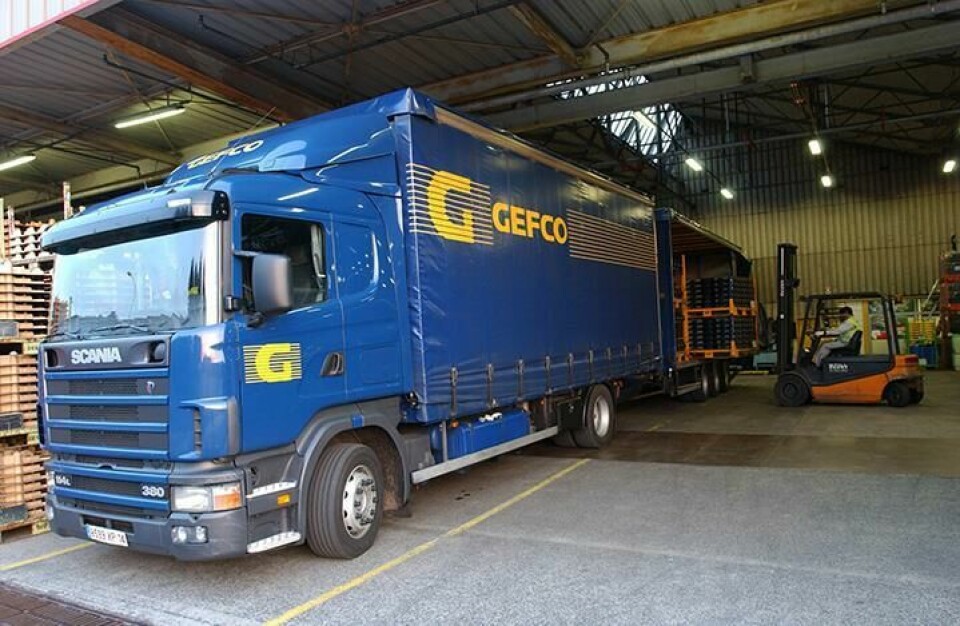
Groupe PSA report: Connecting a supply chain par excellence
-
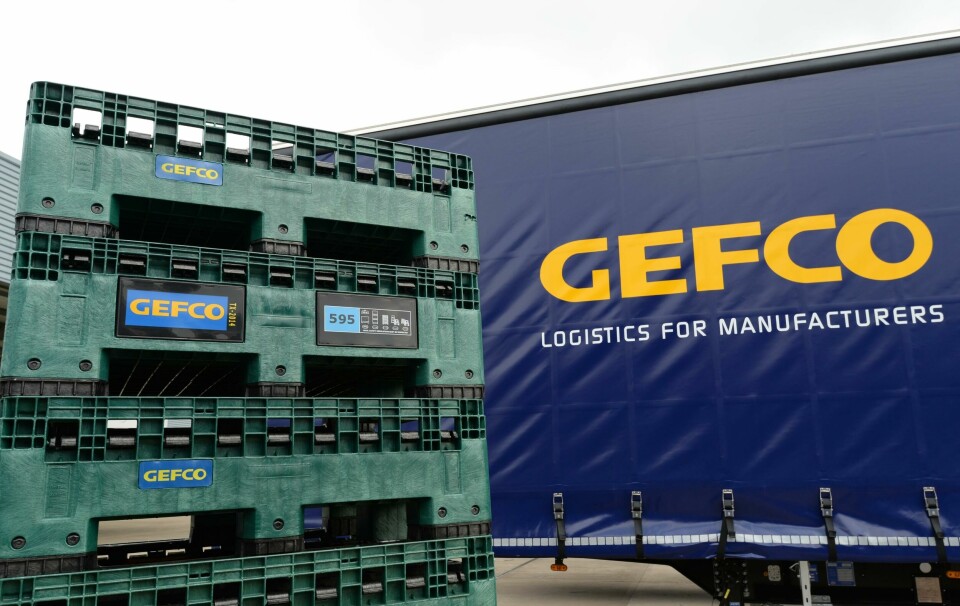
Groupe PSA report: Engineering logistics partnerships
-

Groupe PSA report: A partnership of choice for Gefco and PSA
-
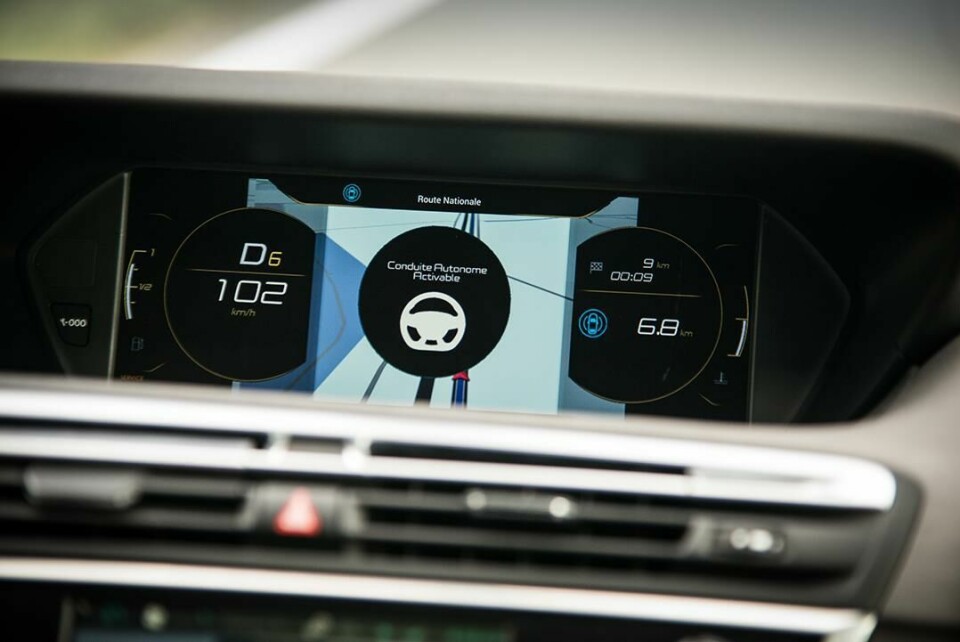
Groupe PSA report: Full throttle towards pole position
All portraits of Francesca Gamboni by Olivier Moravik
When Francesca Gamboni joined Groupe PSA last June, she was not new to the car sector, its supply chain or to French corporate management. Her career already spanned 20 years, including experience at tier suppliers and carmakers, notably numerous logistics-related roles at Renault. Yet, in taking over PSA’s global supply chain, she arrived in the spirit of an outsider ready to change the status quo – in fact, she was hired to do just that.
Gamboni’s background helps; unlike most of PSA’s senior management cadre, she is not French, though the Italian executive has worked with French and global companies in Paris for more than a decade. Neither has she spent her career at PSA, making her less immune to what the French would say had become banalisé – commonplace inefficiency that is now almost invisible, or advantages so everyday they are no longer cultivated.
Gamboni has also been on the outside. As well as earlier experience in aluminium, mining and aerospace, she spent three years before joining PSA in a senior corporate supply chain role at L’Oréal, the world’s largest cosmetic company and a major player in fast-moving consumer goods (FMCG).
Gamboni has returned to automotive with a different vision of supply chain management. L’Oréal and its competitors impressed her with the significance they invested in the supply chain function. In many ways, it sets the course and pace of a company, using highly advanced systems to forecast the full spread of demand, then dialling supply and production up or down in a coordinated way.
This cross-departmental responsibility – commonly referred to as sales and operations planning (S&OP) – is something Gamboni finds less developed across the automotive sector.“What I have often seen in automotive is a mismatch, with little interaction or loops between supply and demand,” she says. “The demand arrives with fluctuations, and the supply tries to react, and then may have bottlenecks, with few interactions or chance for optimisation in between.”
At many OEMs, including PSA, planning for demand has been the responsibility of marketing or sales rather than supply chain. Automotive supply chain managers, and particularly those in logistics, tend to crunch more operational data – engineering transport frequency and routes, analysing cost and capacity constraints, calculating inventory requirements. Those inputs are crucial, but she thinks the supply chain department has a bigger job to do, and should combine its industrial, financial and data skills with a deep market understanding.
 “What I have often seen in automotive is a mismatch, with little interaction or loops between supply and demand… I think supply chain is a bigger responsibility than to shift spreadsheets. It is positioned to be totally transversal and challenge data from other departments with analysis” - Francesca Gamboni, Groupe PSA
“What I have often seen in automotive is a mismatch, with little interaction or loops between supply and demand… I think supply chain is a bigger responsibility than to shift spreadsheets. It is positioned to be totally transversal and challenge data from other departments with analysis” - Francesca Gamboni, Groupe PSA
“In my experience, many in supply chain do the boite-à-lettre [mailbox],” she says. “They take input on one end – commercial outlooks from the sales department, for example – and translate it into output at plants and suppliers.
“I think supply chain is a bigger responsibility than to shift spreadsheets. It is positioned to be totally transversal and challenge data from other departments with analysis.”
Sitting between production, purchasing, finance, sales and marketing, Gamboni thinks the supply chain group should act, and be seen, as nothing less than the corporation’s chef d’orchestre, the music conductor.
And so she made the pitch to the management board: let me develop an S&OP function within the supply chain, with more responsibility for commercial planning. She also had an ambition: turn PSA’s supply chain into an industry benchmark.
Three years into a turnaround under the leadership of another ‘outsider’, Carlos Tavares – who happens to have a penchant for his company topping benchmark surveys – and PSA was ready for a change.
An equation between supply and demand
To understand what Francesca Gamboni wants to develop at PSA, look to the scope of S&OP at consumer product companies. Firms within the cosmetic industry renew half or more of their global product catalogues each year, a pace of change that requires huge flexibility in design, sourcing, production and logistics. With weekly product launches, any inaccuracy in supply means market share losses, spending a fortune to rush deliveries, or being buried in inventory. S&OP keeps factories, suppliers and sales in sync – which is why a cross-departmental function like supply chain runs it.
The supply chain at such FMCG companies analyses current and historic sales data, marketing inputs, correlations and ‘market signals’ – intelligence and clues gathered from sources as varied as market research surveys, trade shows and social media. That this analysis is done within the same group that also measures supply capacity helps to connect commercial demand, purchasing and production – the chef d’orchestre.
Of course, there is no crystal ball, and even the best forecasters and systems miss trends and make false predictions; the outlook, and the response, must evolve constantly. Furthermore, the sales picture that the supply chain presents may not match the ambitions of top management. In that case, supply chain works with sales and marketing departments to factor in incentives to increase demand, building a bridge between the reality and the sales ambition.
 With capacity planned years in advance, but production and supply adjusted almost daily, plants and suppliers are often unprepared for market developments over the medium term
With capacity planned years in advance, but production and supply adjusted almost daily, plants and suppliers are often unprepared for market developments over the medium term“But what is important is that this objective is built, and thus more strongly understood across the company,” Gamboni says. “That allows for a more structured and adaptable plan to meet demand.”
Gamboni sees big differences between the automotive industry and these consumer-focused companies. Although there is a trend towards more frequent model updates, most vehicles still have production lives of 5-7 years. As such, the industry requires a longer planning horizon than FMCG. And with extremely high capital and asset costs, it builds its supply chain around stable, long-term output and military-like precision in short-term execution, notably around logistics, material management and production control.
Between this capacity planned years in advance, and production and supply that adjusts volume almost daily, Gamboni sees a gap: plants and suppliers are often unprepared for market developments over the medium term, including for specific model configuration and components. “The moment you install capacity, your demand is far away, perhaps three or four years,” she says. “But as we get closer to demand, we need to understand what the fluctuation will be, how much flexibility we need, what components will change based on which options are ordered, and how we will need to adjust capacity.”
It is not, of course, that carmakers don’t forecast and track demand; but Gamboni thinks there is a blind spot between how the forecasts and the supply side interact from when a model plan is made up to when it is built. And that gap is more problematic with model and option proliferation.
“Today, complexity is increasing with more international flows, more modular equipment fitted in different models and longer capacity step lead times,” she says. “This makes it compulsory to review our planning process with a focus on the medium-term horizon and global value optimisation.”
Gamboni wants to “put an equation” between demand and PSA’s supply and internal resources. And she thinks calculating that equation within the supply chain organisation is the best way for supply capacity to reflect demand, thus allowing better asset utilisation ‘upstream’, and reducing delivery lead times while raising predictability to customers ‘downstream’.
Picking up the early signals
What has emerged at PSA is a supply chain organisation with a more integrated scope. It still includes areas such as industrial programming and capacity management – effectively setting the supply and plant allocation based on production – along with logistics (inbound, outbound and in-plant), new vehicle and industrial projects, and IT. But the department is now leading a pilot across the company in which it also has responsibility for commercial volume planning, which details sales levels for models and options for up to 18 months.
PSA’s European sales region had previously compiled volume plans for global markets, a “mismatch” that was a product of the carmaker’s historical European focus, Gamboni admits. Now, each sales region provides initial forecasts with the support of the supply chain teams, who then elaborate and update key specifications, including option and model configurations that cascade down to specific component demand.
While the commercial planning in supply chain will not replace the long-term forecasting provided by global marketing, nor the sales order process that characterises real demand from dealers, it will track fluctuations and changes in the market, scouring data for what Gamboni calls “weak signals”.
Those weak signals represent the earliest indications of the direction customer demand will take. Gamboni points to sources that include the response in press and social media following a model unveiling as an example. “The earlier you are able to read those signals in the demand, the more knowledge we can translate into the supply chain and better anticipate our response,” she says.
Information needs to be captured in a systemic way and correlated with other economic indicators, historic results and outlook, combined with qualitative analysis. The carmaker is in the process of rolling out new systems – including a big data pilot – that will support existing processes.
The objective will be to analyse data from a neutral point of view, and therefore challenge what may be entrenched in other departments. For example, those in the ‘back office’– manufacturing and purchasing – may be good at cost control, but they often have limited knowledge about the real market, and may assume that what is good for supply and production is good for sales, too.
 “We needed top management support to make this change – and we have it. The executive board is very open and is willing to do everything to support us in becoming the best in supply chain.” - Francesca Gamboni, Groupe PSA
“We needed top management support to make this change – and we have it. The executive board is very open and is willing to do everything to support us in becoming the best in supply chain.” - Francesca Gamboni, Groupe PSA
Meanwhile, in the ‘front office’ – the commercial side – sales managers do not always distinguish between targets and market reality, while not always understanding supply constraints. “[The commercial divisions] don’t think that the difficulty of selling cars is to produce them and make them available – they say ‘just make it’,” says Gamboni. “They are not interested in production or delivery visibility because they imagine what they want should be produced and delivered when they want it.”
Gamboni is not naïve about the challenge of this new capability in supply chain. If FMCG or e-commerce companies have honed their S&OP process, it is thanks to 20 years of effort. The automotive sector might take as long to catch up, even as it adapts more predictive analytics and big data processes. She also doesn’t pretend that the supply chain group at PSA has all the critical forecasting skills in place – her team is absorbing employees who previously worked in sales and marketing, but also need to adapt to supply chain processes. But she is convinced that hers is the department where truly integrated forecasting should be developed.
“Supply chain managers are already very good at statistics and correlations, looking at freight and inventory factors one month and making adjustments the next,” she says. “They have worked with the ‘back office’ of manufacturers for decades to reduce cost step-by-step, including by kaizen, lean principles, just-in-sequence, etc.
“The same approach needs to done now for sales forecasting,” she says.
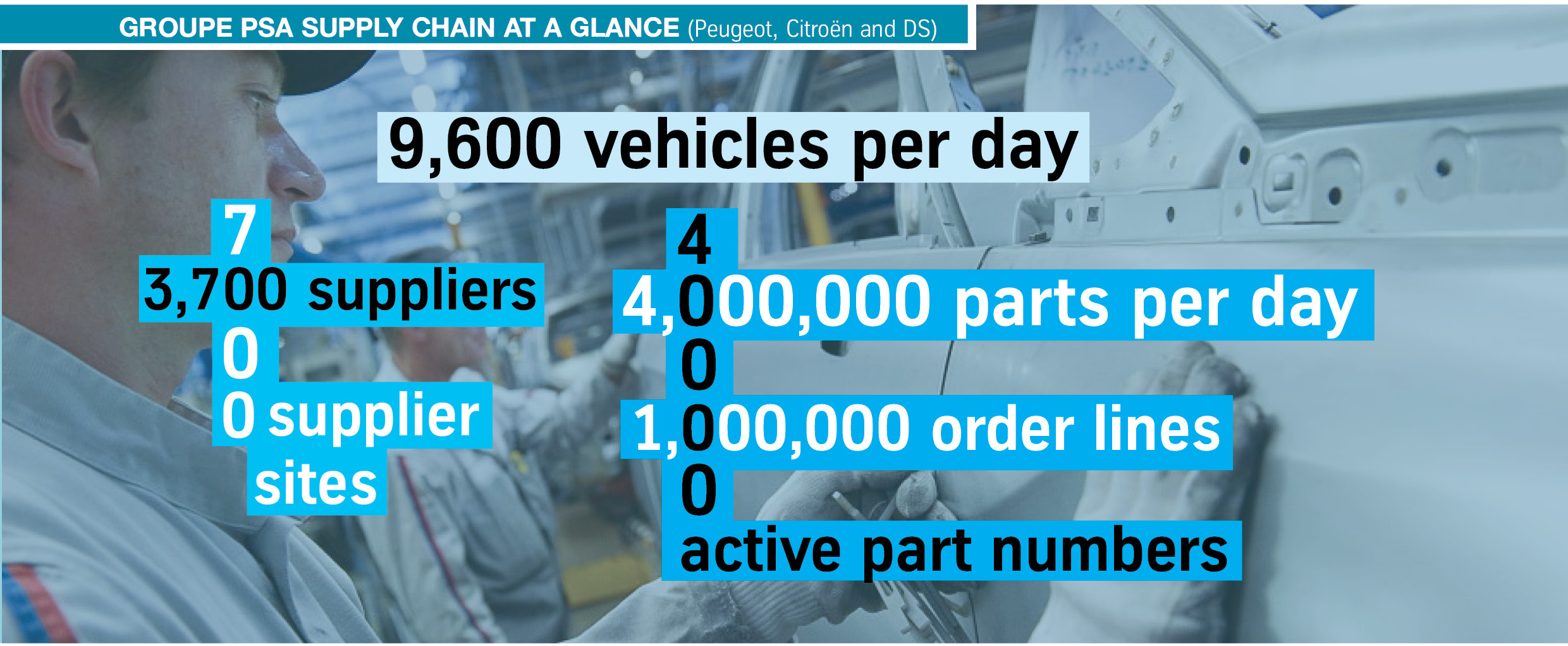 A changing organisation
A changing organisation
Incorporating sales planning into the supply chain organisation is new for Groupe PSA and is relatively unique compared to other OEMs, at least in terms of combining it with logistics and capacity management. Volume planning is often managed by marketing, though it might have a link to logistics where carmakers have split sales and production into separate companies, as is the case for many Asian OEMs in Europe and the US. In those cases, sales allocation to dealers often sits in the same department as outbound logistics.
In Europe, for example, Kia has a supply chain team that forecasts specifications for European production and imports to help plants and suppliers better plan capacity. Its scope is regional and less integrated on the production side, however.
But there is a trend across the industry toward integrating more commercial and demand considerations, with some carmakers developing S&OP functions within supply chain and logistics departments. Fiat Chrysler, for example, has developed S&OP within supply chain over the past three years, combining disciplines in a similar way to PSA’s new structure, including logistics and supplier management, commercial demand and production planning.
Mercedes-Benz, too, has created a supply chain management division for its passenger car division that makes a stronger link between production, sourcing, logistics and sales. GM has likewise created a demand/supply function over the past two years – focused, for now, on North America – that assesses model mix and option penetration on one side, and capacity constraints across production and supply on the other.
Opel/Vauxhall has also been actively trying to improve production planning and supply forecasts, with processes that may prove interesting to PSA as the two companies come together. Over the past three years, Opel has implemented an ‘order slotting’ system, together with IT provider Flexis, to improve the visibility of critical parts, and highlight potential issues early enough to allow the carmaker to react and avoid disruption to production sequences. Last summer, Opel’s top logistics management told Automotive Logistics that by having more reliable production sequences, the process also supports many supply chain benefits, from more accurate final delivery dates to sharing production information with logistics providers earlier, helping them to plan loads and routes better.[sta_anchor id=”5”]
Critical for Francesca Gamboni and for PSA, however, is that the main forecasting emphasis will be on the commercial side. Gefco’s chairman of the board, Luc Nadal, agrees that the automotive sector often lacks a strong link between how its production volume and sequence are set, and the realities of getting products to market. He already sees specific ways in which a stronger link between sales forecasting, production planning and logistics would have significant benefits.
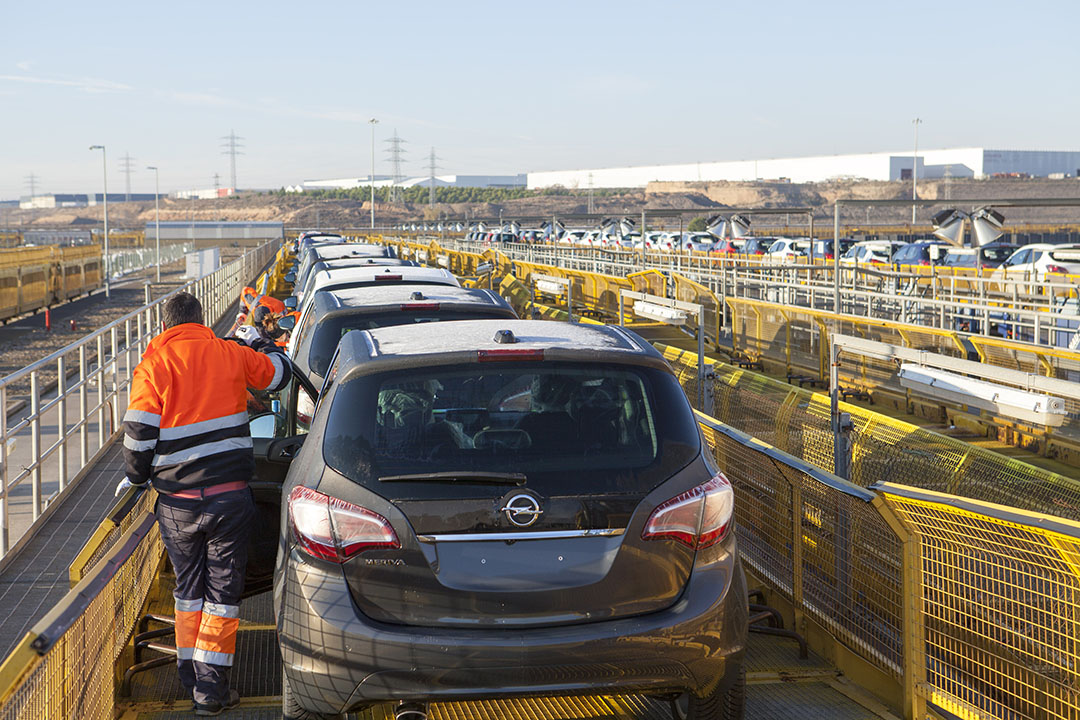 Opel/Vauxhall’s order-slotting system suggests that it has similar objectives as PSA in improving demand/supply balance
Opel/Vauxhall’s order-slotting system suggests that it has similar objectives as PSA in improving demand/supply balance“PSA is quite good at managing inbound inventory for logistics,” says Nadal. “For vehicle logistics, however, there is room for improvement. We say to PSA, and to many OEMs, if you can improve your production planning and the way it is connected to your sales, you can reduce [vehicle] inventory and optimise transport costs.”
For example, as Opel/Vauxhall aspires to do, OEMs could use supply chain data for distribution lead times and vehicle inventory costs when planning the production sequence, with low-volume models or destinations produced in closer sequence, allowing logistics providers to fill a truck quicker or meet ship sailings, reducing overall delivery time.
“It’s not about a cheaper transport cost, but it would reduce days of inventory and delivery,” he says.
More reliable visibility over sales and production plans would also help Gefco and other providers to secure more accurate transport capacity in advance. That could mean better rates, especially where return routes are possible. The more accurate the data, the less excess, buffer transport capacity Gefco would need to arrange. “We are sometimes told that we reserve too much equipment, however we often need that buffer to manage fluctuations,” says Nadal.
“We can optimise plans but it needs collaboration, including trust and transparency between us and PSA or other OEMs to exchange confidential data,” he adds.
As identified by similar objectives among other OEMs, improving scheduling and data sharing is not new. However, Gamboni thinks logistics departments, until now, have usually lacked the integration and the authority to make such links and decisions most effectively.
“That is why we needed top management support to make this change – and we have it,” says Gamboni. “The executive board is very open and is willing to do everything to support us in becoming the best in supply chain.”
Automotive is certainly not behind FMCG in all supply chain areas, according to Francesca Gamboni. Few can touch it in logistics and operations. Pull-based supply flows with minimal parts inventory, especially for inbound transport and materials handling in warehouses and plants, are de rigeur. Automotive logistics, in the sense of freight transport execution and cost control, is “far more advanced than any other sector”, she says, and is “treated very seriously by all manufacturers and with very competent providers”.
She includes PSA in this category, where complexity for the Peugeot, Citroën and DS brands can be read in a supply chain that includes 3,700 suppliers across 7,000 supplier sites, serving some 11 assembly and five powertrain plants in Europe, plus global plants in Russia, China, Africa and South America.
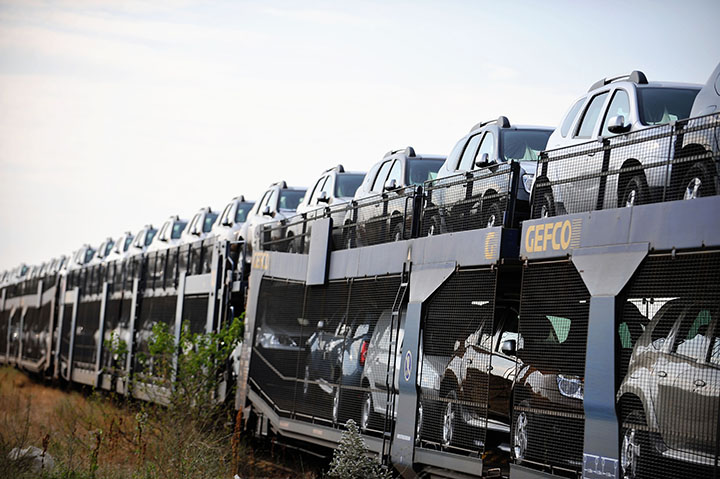 PSA signed Gefco for a five-year exclusive contract that strives for service quality and stability, but the carmaker is still demanding more innovation and efficiencies to help reduce supply chain costs
PSA signed Gefco for a five-year exclusive contract that strives for service quality and stability, but the carmaker is still demanding more innovation and efficiencies to help reduce supply chain costsA large share of this supply chain is managed or executed by Gefco, which Gamboni credits as one of the best providers for service and quality. It’s an operational reliability that PSA is willing to pay for, having just renewed a five-year contract worth €8 billion ($8.44 billion) – a budget that makes Gefco PSA’s second largest supplier globally.
“The fact that Gefco is a top performer in service, flexibility and innovation has been a key factor in our decision process,” she stresses. “Such levels of quality are very important to PSA.”
However, PSA is still looking aggressively for logistics efficiencies, including with Gefco. The new contract includes some changes, such as the use of more open book, neutral transport management – a fourth-party logistics (4PL) model – in some markets. But Gamboni is less concerned with rate reductions than with a deeper relationship and an emphasis on sharing benefits and ideas. PSA and Gefco have established a new logistics innovation lab, for example, to explore cost and performance improvements. “The lab is focused on how we can improve PSA’s bottom line and Gefco’s top line,” she says.
“It’s a change in mindset,” says Luc Nadal, chairman of the board at Gefco. “Our relationship is based on mutual cooperation and respect, but also it is a change because PSA and Gefco have chosen each other, and no longer because PSA owns Gefco.”
Gamboni believes that a more integrated supply chain organisation, with a stronger link between sales planning and supply, would also benefit Gefco and logistics carriers, from capacity planning to reducing delivery times. “Once our supply chain group is reading demand signals correctly, we will pass it very quickly to our partners such as Gefco, for which it will have very important impacts,” says Gamboni.





